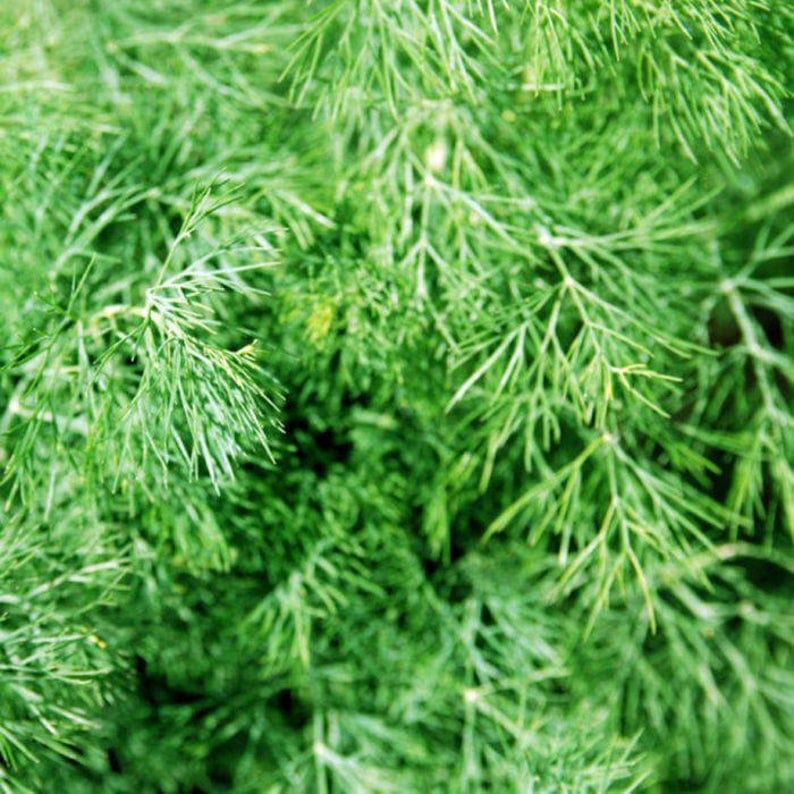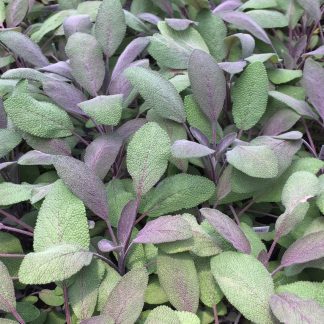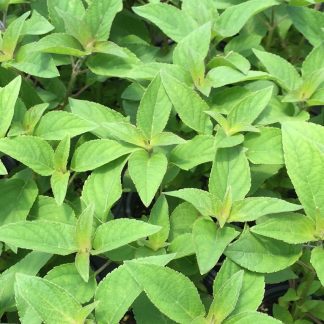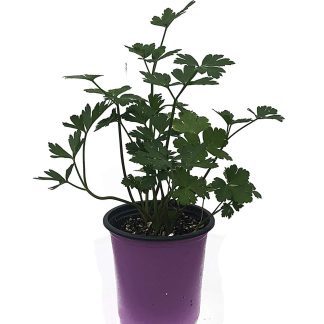Description
Dill ‘Dwarf Fern-Leaf’: Compact Herb with Fragrant Foliage
Dill ‘Dwarf Fern-Leaf’ is a charming variety of dill (Anethum graveolens) that stands out for its compact size and finely divided, feathery foliage. Unlike standard dill, which can grow tall and spindly, this dwarf variety forms a dense mound of aromatic leaves, making it ideal for small gardens, containers, and windowsill herb collections.
Key Characteristics
- Botanical Name: Anethum graveolens ‘Dwarf Fern-Leaf’
- Plant Type: Annual herb
- Height and Spread: 12–18 inches tall; about 10–12 inches wide
- Foliage: Fine, fern-like, bright green leaves with a soft texture
- Flavor: Classic dill taste—fresh, slightly sweet, and tangy
- Bloom Time: Summer (yellow umbels attract pollinators)
Why Gardeners Love It
This variety is prized for its compact habit and continuous leaf production, which makes it perfect for frequent harvesting. The delicate foliage is excellent for flavoring salads, fish, pickles, and sauces. It’s also ornamental—its lacy leaves and golden flowers add texture to herb gardens and edible landscapes.
Growing Conditions
- Light: Full sun (at least 6 hours daily)
- Soil: Well-drained, moderately rich soil
- pH: Neutral to slightly acidic (6.0–7.0)
- Watering: Keep soil consistently moist, especially in containers
- Temperature: Thrives in cooler weather but tolerates summer heat if watered well
Planting Tips
- Direct Sowing: Best sown directly in the garden or container after frost danger has passed. Dill dislikes transplanting due to its long taproot.
- Spacing: 8–10 inches apart for compact growth.
- Succession Planting: Sow every 3–4 weeks for continuous harvest throughout the season.
Harvesting
- Leaves: Begin cutting foliage once the plant reaches 6–8 inches tall. Regular harvesting encourages bushier growth.
- Seeds: Allow some flower heads to mature for seed harvest, which can be used for pickling or reseeding next year.
Culinary Uses
- Perfect for pickling cucumbers, seasoning fish dishes, adding to potato salads, or stirring into yogurt-based sauces.
- Fresh leaves lose flavor quickly when cooked, so add at the end of cooking for best taste.
Companion Planting
- Pairs well with cabbage, onions, lettuce, and cucumbers.
- Attracts beneficial insects like ladybugs and pollinators while repelling pests such as aphids.
Container Gardening
‘Dwarf Fern-Leaf’ dill’s smaller size makes it perfect for balconies, patios, or kitchen windows. Use a pot at least 8–10 inches deep to accommodate the taproot, and ensure good drainage to prevent root rot.
Special Notes
- Bolt Resistance: While no dill is fully bolt-resistant, this variety tends to flower later than taller types, extending the leaf harvest window.
- Indoor Growing: Can be grown indoors under grow lights or in a bright south-facing window for year-round harvest.
Bringing Aroma and Flavor to Small Spaces
Dill ‘Dwarf Fern-Leaf’ is the perfect answer for gardeners with limited space who still want the taste and fragrance of fresh dill. Its compact size, attractive foliage, and versatile culinary uses make it a must-have for container herb gardens and kitchen windowsills alike.




